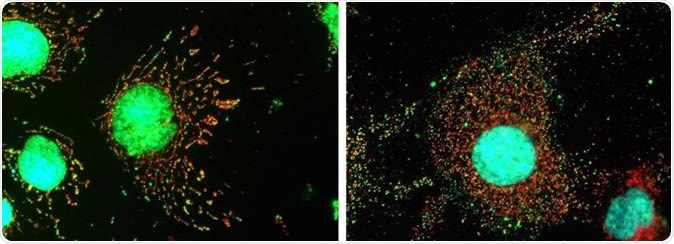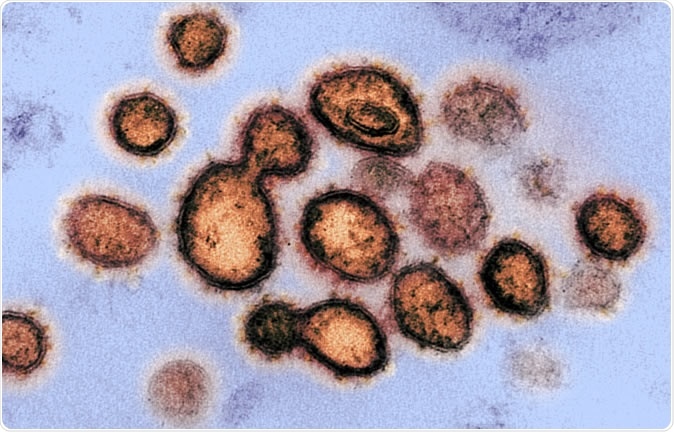Amid the coronavirus outbreak that is wreaking havoc across the globe, it is essential to know how the cells of the body evade infection from viruses. A team of scientists has explained the mechanism that takes place in case a virus penetrates the body.
A team of scientists from Mayo Clinic has shed light on how the cells of the body protect themselves from viruses. In the study published in the journal Nature Communications, the researchers have identified a protein, which is known to help cells defend themselves against infection, and it can also regulate the form and function of the mitochondria.
Called myxovirus-resistance (Mx) proteins, these proteins are known to show significantly increased expression through an interferon-responsive promoter to associate with nuclear pores. The researchers have identified that MxB is an inner mitochondrial membrane GTPase, which plays a pivotal role in the form or shape and function of the mitochondria.
The proteins help cells protect themselves and fight infections without using systemic antibodies or white blood cells. In the study, the proteins, which was tied to an immune response against the human immunodeficiency virus (HIV) and herpes virus, is essential for mitochondrial support.

The image at left shows normal cells with tubular mitochondria (red), and DNA (green) in the nucleus and within the mitochondria. At right, MxB has been removed by genetic means and leaves fragmented mitochondria (red) with its genome displaced into the cytoplasm. Image Credit: Mayo Clinic
What happens during a viral infection?
Viruses are pathogens that can cause diseases, ranging from mild illnesses to severe ones, like the coronavirus disease (COVID-19) outbreak happening today. When there is a viral infection, it occurs when a harmful virus enters the body and replicates it. Viruses cannot proliferate or replicate without help from a host, infecting other cells.

Novel Coronavirus SARS-CoV-2 - This transmission electron microscope image shows SARS-CoV-2, the virus that causes COVID-19, isolated from a patient in the U.S. Virus particles are shown emerging from the surface of cells cultured in the lab. The spikes on the outer edge of the virus particles give coronaviruses their name, crown-like. Credit: NIAID-RML
When there is a viral infection, the cell releases interferon, and neighboring cells increase the production of Mx proteins. When the scientists further studied this mechanism, they found that MxB is present on and in the mitochondria, which is both triggered in response to an infection. They also found that proteins are vital for mitochondrial integrity.
“We were surprised to see MxB present on, and in, mitochondria. That it is both induced in response to infection and vital to mitochondrial integrity is exciting, considering that HIV and herpes alter mitochondria during infection,” Dr. Hong Cao, a researcher at Mayo Clinic said.
Mitochondrial integrity
The mitochondrion is a vital part of every cell in the body. The membrane is where chemical reactions happen, while the fluid is contained in the matrix. The primary function of the mitochondria is for cellular respiration, which happens when nutrients are absorbed by it in the cell, breaks it down, and converts it into energy.
When the mitochondria do not function properly, the cell will die. Often called the cell generator or powerhouse, the mitochondria produce energy for the cells to function correctly. The authors of the study found that during an infection, the MxB proteins condenses, dissolves, and reforms over time. The Mxb affects the mitochondria in a way that if there is no active MxB protein, the mitochondria malfunctions, unable to produce energy.
The researchers plan to investigate further how MxB is targeted to and internalized by the mitochondria. Also, they want to know how the protein influence drastic changes to the form and biology of the cell organelle.
About twenty years ago, the laboratory found a set of proteins that influences the shape and function of the mitochondria. Since the discovery of MxB proteins, it has contributed to many studies and researches, including evidence-based practices in the clinical field.
Some of the discoveries in the field are regulating cell death required to stem cancer cell growth, the turnover of mitochondria that is important to prevent the development of neurodegenerative disorders, and antiviral cell immunity, among others.
Source:
Journal reference:
Cao, H., Krueger, E.W., Chen, J. et al. The anti-viral dynamin family member MxB participates in mitochondrial integrity. Nat Commun 11, 1048 (2020). https://doi.org/10.1038/s41467-020-14727-w